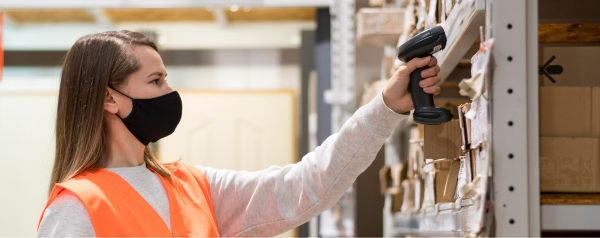All, Inspection News
Preparing for First Article Inspection (FAI): What You Need to Know
First article inspection (FAI) is crucial in ensuring that your manufacturing process meets quality standards and customer requirements. It involves inspectingthe first manufactured product in a batch to ensure it meets all quality criteria and specifications. If any defects are found, it can lead to costly rework or rejection of the entire batch, impacting production schedules and customer satisfaction. In this article, we will discuss FAI, why it matters, and how to prepare for it to minimize the risk of rejects and optimize your manufacturing process.
What is the first article inspection?
First article inspection (FAI) is a quality control process that involves inspecting the first manufactured product in a batch to ensure it meets all quality criteria and specifications. It is performed before mass production begins to identify any issues or defects that may impact the quality of the final product. For example, if a manufacturer is producing a new car model, they would perform an FAI on the first car produced to ensure that it meets all quality standards and specifications before starting mass production.
Why is first article inspection important in manufacturing?
First article inspection (FAI) is important in manufacturing because it ensures that products are made to the correct specifications and meet customer requirements. By identifying any issues or defects early on, manufacturers can minimize the risk of rejects, optimize the manufacturing process, and ensure compliance with industry standards and regulations.
How to ensure FAI quality control in your manufacturing process
It is important to consider several factors to ensure FAI quality control in your manufacturing process.
First, you need to define the inspection scope and identify the quality criteria that will be inspected, such as dimensions, tolerances, surface finish, material properties, and functionality.
Second, you need a well-trained and experienced FAI team familiar with the product specifications and manufacturing process. The team should accurately identify defects and ensure that the FAI process is well-documented so all stakeholders know the expectations and procedures.
Third, you must implement a rigorous FAI process that includes all necessary inspections, tests, and verifications. This process should be standardized and repeatable to ensure consistency in quality control.
Fourth, you should use appropriate tools and technologies to support the FAI process, such as measuring instruments, testing equipment, and data analysis and reporting software.
Finally, you should continuously monitor and improve the FAI process to optimize quality control and minimize the risk of rejects. This includes collecting and analyzing data, identifying areas for improvement, and implementing corrective actions as needed.
What is FAI material testing, and why does it matter?
FAI material testing is a process of determining the properties of raw material and how it behaves under different conditions. This testing aims to ensure that the material can be used for the desired application.
There are many different types of materials, each with its own properties that must be tested. For example, some of the properties that may be tested are:
- Mechanical properties: test how the material responds to applied forces, such as stress, strain, hardness, toughness, fatigue, etc.
- Chemical properties: test how the material reacts with other substances, such as corrosion, oxidation, flammability, toxicity, etc.
- Physical properties: how the material behaves in shape, size, density, colour, texture, etc.
- Thermal properties: how the material responds to changes in temperature, such as thermal expansion, thermal conductivity, specific heat, etc.
- Electrical properties: how the material conducts or resists electric current, such as electrical conductivity, resistivity, dielectric constant, etc.
- Magnetic properties: how the material interacts with magnetic fields, such as magnetic permeability, coercivity, remanence, etc.
- Optical properties: how the material reflects or transmits light, such as refractive index, reflectivity, transmittance, etc.
Checking the quality of materials is important to ensure they meet what the design and the customer require. It helps avoid issues, choose the best materials and manufacturing processes, enhance product performance and functionality, and follow industry standards and regulations.
The first article of inspection procedures
There are many ways to conduct an FAI Inspection, but the most important thing is to be thorough and cover all aspects of the manufacturing process. This includes looking at the raw materials, the equipment used, the assembly process, and the final product. Here are some tips on how to conduct an effective FAI:
Define the scope of the inspection.
The first step is clearly defining what will be included in the inspection. This should include all materials, components, and processes covered.
Create a checklist
Creating a checklist of everything that needs to be inspected will help ensure nothing is missed. The quality assurance section or the supplier can create this.
Inspect the raw materials.
The inspection should start with the raw materials used in the manufacturing process. This includes looking at the quality of the materials and making sure that they meet all specifications.
Inspect the equipment
The next step is to inspect all of the equipment used in the manufacturing process. This includes both the machinery and any tools that will be used.
Inspect the assembly process.
The assembly process should be closely inspected to ensure all parts are assembled correctly. This includes both manual and automated processes.
Inspect the final product.
Once the product is assembled, it should be thoroughly inspected to ensure it meets all specifications. This includes checking for any defects or problems.
Documenting results and making recommendations based on findings
When checking out how things are made, write down what you find out. You need to make note of both the good things and the bad things that you discover. Then, based on what you learn, you can offer some suggestions that will help make the manufacturing process better. Maybe they need to change the materials they’re using, or maybe they need to improve the equipment or how they put things together.
Partner with a reliable first article inspection third-party company
When you need to find a first article inspection services provider, you should look for a company with a lot of industry experience. You should also ensure that the company is certified and has a good reputation. Here are some factors you need to consider when choosing a reputable first-article inspection service provider.
- Choose an experienced company: Look for a company with a lot of experience with the product you need inspected.
- Check certification: Ensure the inspection service provider is certified to perform the inspection.
- Check reputation: Search online for company reviews to get a clear idea of its reputation.
- Compare prices: Get quotes from several companies to ensure their service is affordable. Also, ask specifically if there are any hidden fees.
- Ask for referrals: If online reviews are not enough, ask someone who has used a first article inspection service provider before for a referral.
- Read the fine print: Before hiring, read all the fine print to ensure you understand all the terms and conditions.
- Get everything in writing: Ensure there is no misunderstanding about the agreement by getting everything in writing.
Choosing an experienced first-article inspection service provider such as VIS Quality Control can offer numerous advantages. Our team has extensive experience in conducting First-article inspections globally. Our fast and dependable service guarantees that your first article will be accurately inspected and the inspection report will be provided to you within 24 hours.
Contact us today!











